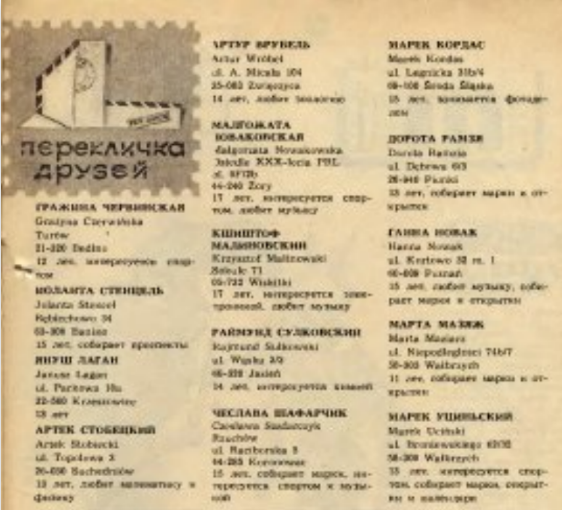 This unusual design for a one-transistor receiver came from Poland 40 years ago. Perhaps it was used to pull in reports from Radio Free Europe in anticipation of the rise of Solidarity.
This unusual design for a one-transistor receiver came from Poland 40 years ago. Perhaps it was used to pull in reports from Radio Free Europe in anticipation of the rise of Solidarity.
It appears in the October 1979 issue of the Polish magazine Horyzonty Techniki dla Dzieci (Horizons of technology for children), which was published in the Soviet Union with the Russian title Горизонты техники для детей. No schematic is given, but the general idea is clear from the pictorial diagram shown above. (The mice are presumably optional.) The small red component is a solid-state diode, the output of which is amplified by the transistor. The blue component underneath appears to be the battery. One side of the battery goes to a terminal of the transistor (probably the emitter), and the other battery terminal connects to the headphone, which is also connected to another terminal of the battery (probably the collector). The polarity of the battery would depend on whether it’s an NPN or a PNP transistor.
The most unusual feature of this set is the tuning. Two honeycomb coils are wound on flat forms. They are then connected similarly to a variometer. More detail can be seen in the illustration below. The coil forms appear to be cardboard and popsicle sticks. The set is tuned by adjusting the mutual inductance by varying the angle.
One interesting feature of this magazine was a listing of addresses of children in Poland who desired Soviet penpals. A copy of that page is shown below. The names are shown in Cyrillic, followed by the full name and address in the Roman alphabet. This is followed by a few lines in Russian with the child’s age and a short description.


